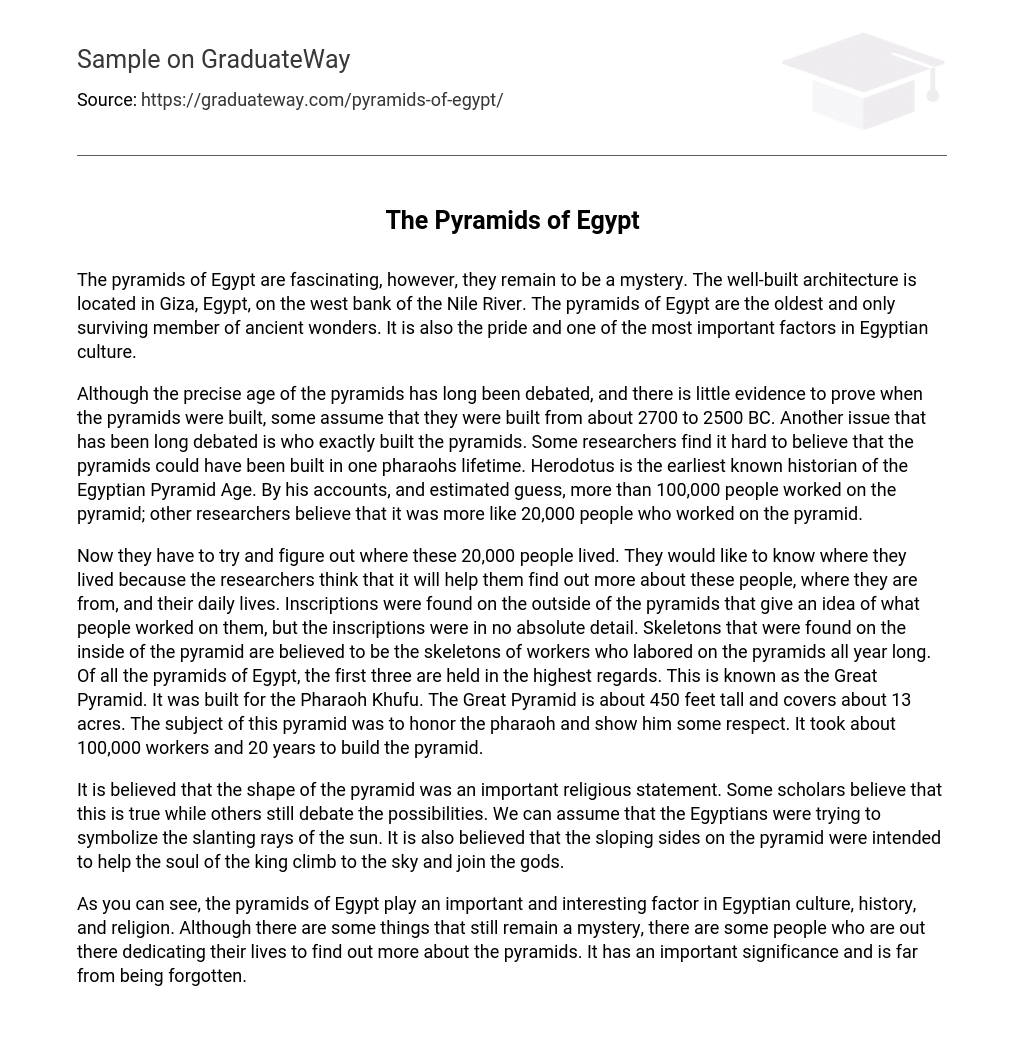Despite being shrouded in mystery, the pyramids of Egypt in Giza on the western side of the Nile River are both fascinating and impressive. They are not only the oldest surviving structures among the ancient wonders but also hold immense cultural significance for Egypt.
The age of the pyramids remains a topic of ongoing discussion and there is limited evidence to determine their construction timeline. Some theories propose that they were built between approximately 2700 and 2500 BC. The identity of the builders has also been extensively debated. Certain researchers find it hard to believe that a single pharaoh could have completed the construction of these impressive structures during their lifetime. During the Egyptian Pyramid Age, Herodotus, an early historian, estimated a workforce of over 100,000 individuals, while other scholars suggest around 20,000 workers.
The researchers are currently assigned the task of determining the residences of these 20,000 individuals. Uncovering their living locations is crucial as it will provide valuable insights into their origins and daily routines. The inscriptions on the pyramids’ exteriors offer some clues about their tasks but lack specific information. The skeletons found inside the pyramid are believed to be those of workers who devoted themselves year-round to constructing pyramids. Among all the pyramids in Egypt, the first three hold great significance, particularly the Great Pyramid. This particular pyramid was built as a tribute to Pharaoh Khufu and stands at around 450 feet tall, covering an area of approximately 13 acres. It took about 100,000 workers 20 years to construct this monumental structure.
Scholars hold varying views on the religious significance of the pyramid’s shape. Some suggest it symbolizes the sun’s rays, while others propose different interpretations. Moreover, it is speculated that the sloping sides were purposefully constructed to aid the king’s soul in ascending to heaven and joining with deities.
The pyramids of Egypt have immense importance in Egyptian culture, history, and religion. While there are still unanswered questions about these ancient structures, there are dedicated individuals who strive to discover more about them. The pyramids retain their significant value and continue to be a timeless symbol.





